With the discovery that crude oil could be refined into a seemingly endless variety of products, petroleum became one of the most important substances on earth. Now, more than a century later, oil has lost some of its allure in the U.S., primarily due to climate change and our overdependence on unpredictable foreign sources.
Today, scientists are scrambling to find alternatives to oil and another fossil fuel, coal. Their search has led back to the source that was once as dominant as oil is today: wood. Beyond being processed into pellets and chips for power and heat, wood has chemical properties that are being explored for various uses. Turning wood into ethanol (cellulosic ethanol) might seem like a new idea, but we have been extracting chemicals from wood for centuries. In fact, long before our society ran on petroleum and synthetic chemicals, it ran on wood.
Wood contains a variety of useful chemicals. In colonial times, the Northeast’s European settlers were faced with a nearly unbroken forest that was in the way of the agricultural pursuits that would make their existence here possible. Over the next centuries, in the process of clearing the land for agriculture, these settlers fulfilled their need for heating and cooking wood, and they also burned piles of wood for the ashes, which they soaked in water and filtered to make lye (potassium hydroxide), saltpeter (potassium nitrate), and potash (potassium oxide). The lye was used to make soap, which was used commercially to clean wool both here and abroad. (Europe, having turned its forests into sheep pasture, was desperate for lye.) Saltpeter was used to cure food and make black powder.
Another product from the millions of acres of Northeastern hardwood forests was charcoal, which had been in use in Europe for hundreds of years for refining iron ore. (Charcoal burns hotter, cleaner, and longer than wood; to smelt iron you need intense, even heat.) Charcoal kilns quickly developed throughout the region, especially in Vermont, Massachusetts, and New York.
Manufacturing charcoal involves heating wood in a closed environment with very limited oxygen. Through the heating process, moisture and gases are removed from the wood. Early charcoal kilns were simple affairs, little more than earthen pits where wood was ignited, then smothered with sand. Later kilns were built of stone, and later still, brick.
In these early kilns, the gases created by the burning process were simply lost into the atmosphere. In time, charcoal makers developed methods to capture and process these gases into various acids, alcohols, aldehydes, ketones, and other organic compounds. These wood chemicals were key ingredients in many of the day’s revolutionary conveniences – from rubber to paint thinner.
Where There’s Smoke, There’s…Pyroligneous Acid
While the chemistry was complicated, the process these early engineers used to refine wood chemicals was fairly straightforward. The primary byproduct of charcoal production was pyroligneous acid (from the Latin pyr, meaning fire, and ligneus, meaning wood). Pyroligneous acid was created by capturing wood smoke in the charcoal-making process, then condensing it in a copper still.
The resulting pyroligneous acid was then decanted through a series of stepped barrels and pipes; this allowed the insoluble wood tar to settle out. The wood tar was used as a fuel source and as a cure for meat, before it was discovered to be carcinogenic.
After the wood tar had been removed, the pyroligneous acid was neutralized with slacked lime. Workers slowly stirred lime into the liquid until it achieved a rich wine color. In the early days, this mixture was dried in pans directly over the retorts and the resulting grayish powder was bagged and marketed as “acetate of lime.” This product was sold to textile mills, where it was converted back to a liquid form and used as a dye fixative. Acetic acid was also used to make cordite, the first smokeless substitute for black powder, and acetone, a popular solvent. Liquefied acetate of lime is acetic acid – the key ingredient in vinegar.
As the factories became more sophisticated, the lime slurry was heated in an iron “lime lee” still to produce acetate, methanol, and wood alcohol. Methanol was widely used as a solvent and antifreeze solution. Methanol could also be converted to formaldehyde by passing its heated vapors through a platinum catalyst filter. Formaldehyde found uses as a preservative, to strip lanolin from wool, and as a key element in the manufacture of phenol formaldehyde, or “Bakelite,” an early plastic material.
Eventually, the chemical byproducts created in the charcoal-making process became more valuable than the charcoal itself. The industry came to be known as the “acid-wood” industry.
Distilling Wood
The acid-wood industry became firmly established in the Northeast in the 19th century. In 1830, James Wood successfully manufactured pyroligneous acid at Northhampton, Massachusetts. John Turnbull, of Scotland, settled in 1850 at Millburn (now Conklinville) in Broome County, New York, where he built the first successful wood distillation plant to produce acetate of lime. The technology quickly caught on, and by the late 1800s and early 1900s, wood chemical plants were springing up across wide areas of New York, Pennsylvania, and New England.
The region was well suited to produce wood chemicals. There were abundant hardwood forests, and water was readily available. Many of the rural residents welcomed the opportunity for further employment. Manufacturing plants in the Northeast offered ready markets for products, along with an ongoing charcoal industry.
The charcoal and acid-wood plants typically used 4-foot lengths of wood in small diameters. Tree tops and waste from lumber production were used in the early kilns, but that source wouldn’t suffice for long. With the introduction of more modern plants – called “retorts” – the economies of scale necessitated having a large inventory of wood on hand.
According to Dan Myers, author of The Wood Chemical Industry in the Delaware Valley, some big factories owned large tracts of land that they managed for charcoal and sawtimber. The George I. Treyz Company in Cooks Falls, New York, for example, maintained a 25,000-acre woodlot; the high-quality logs were sawed, while the tops and low-grade hardwood were fed into the retorts. Many smaller plants were not associated with sawmills, though, and these companies simply cut and burned whatever wood they could get their hands on.
Crews of freelance woodcutters cut and processed hardwood trees in nearby forests. The expansion of the industry in the 1800s and early 1900s provided off-season work to farmers and others. Trees were felled during the winter, yielding wood with low moisture content. Wood was hauled by horse cart, and later by rail, to the factory site. Here the wood was usually air dried for a year before processing, to further reduce the water content and speed up the processing time.
Myers states in his book that a plant of average size, burning 36 cords of wood per day, six days a week, burned 11,232 cords of wood a year. Stacked in a block 4 feet high, this wood would have occupied 8¼ acres. As you can imagine, the region’s wood resources were strained. Entire hillsides and the areas around the acid factories quickly became denuded, and as a result, roads and small railroads were built so that wood could be hauled longer distances. Motorized vehicles in the woods, such as the Linn tractor, enabled the cutters to increase their output. With the good growing conditions of the northeastern United States, second growth forests quickly made it possible for woodcutters to return to the same location after 20 to 30 years to harvest another crop. At the height of the acid-wood industry in the early 1900s in Delaware and Sullivan counties of New York, annual wood consumption is estimated to have been 190,000 cords, with 3,000 men employed in over 100 plants.
Work in the acid-wood plants was hard and often dangerous. Still, the industry provided many jobs for low-skilled laborers, with a few highly trained persons to engineer the process and run the retorts. Communities developed around the acid-wood processing plants. In the Catskills, places like Cadosia, Horton, and Corbett owe their beginnings to the acid-wood factories that once thrived there. A typical factory town contained simple frame homes without running water or electricity; single men lived in boarding houses. A company store sold food and other necessities; goods were frequently purchased with company-issued script. Most of the buildings in town were owned by the company.
Trees were felled, cut, split, and stacked using hand tools, and the wood was placed on wagons by hand. Horses hauled the wood to a truck or rail car, where men loaded and unloaded the 4-foot lengths of wood. At the mill, wood was loaded onto carts and wheeled into and out of the retorts by hand.
When finished charcoal came out of the ovens, it was extremely dangerous to handle. It had to be cooled, but any sort of breeze could cause the entire load to burst into flame. Reports abound of loads of fresh charcoal exploding from not being sufficiently cooled. One New England driver left his load of charcoal in the wagon for the night, returning the next day to find only the hardware from the wagon remaining.
Dangerous, dirty work was typical of the great movement of manufacturing across the United States in the early centuries of American industrialization. The odor from the acid factories lingered in the air, clung to clothes and skin. Tar from the distillation process that wasn’t burned for fuel was dumped into lagoons, or piped directly into rivers. But that was a different age. People were proud of their accomplishments and their industry, and clear-cut forests and air or water pollution were not yet concerns. Producing an important product, earning a paycheck, and struggling to raise a family were all-consuming activities.
Further Refinement
As time went on, better techniques were developed for both charcoal manufacturing and acid recovery. Twentieth century chemical factories featured long, horizontal ovens in which gases were controlled before being piped into the distillation apparatus. (This was an especially helpful refinement of the process, since early factories featured stills that were housed in a chamber directly above the charcoal-processing ovens. This design flaw led to more than one devastating explosion.) Some plants further refined the gases into various products, but others merely shipped the mixed pyroligneous acid to other locations. A complete manufacturing sector rose up, including timber harvesting, acid-wood plants, transportation networks, final distillation plants, and allied manufacturing that used the finished wood chemicals.
The heyday of the large-scale wood-chemical industry in the Northeast was from the early 1900s until the 1940s. The nation was expanding, and demand for the products was high. By the time the United States entered World War I (1917), the industry had consolidated and smaller plants had been replaced by larger, more efficient ones. The industry spread west into Michigan and the Lake States. Meanwhile, in the far West and the South, a related industry was developing using softwood (southern and western pine species) to produce turpentine and other chemicals. Pine tar, still used by baseball players to provide a better grip on their bats, is also created by this process.
Shortly after World War II, however, the industry collapsed. Research in both America and Europe led to substitution of petroleum-based products for wood-based chemicals. At the time, petroleum provided a means for cheaper methods of production and was better suited to very large-scale manufacturing. The industrial charcoal market was rendered obsolete by natural gas and by Appalachian coal, which was hotter-burning, longer-lasting, and readily available. Charcoal’s principal use became fuel for outdoor cooking, as it is today. Some retorts persisted into the 1950s and ’60s, but the surrounding communities declined, and acid-wood cutting eventually ceased.
In some parts of the Northeast, the recovery of the forest has been amazing. On better soils, with good reserves of basic chemicals (the clay and loam soils found in many hardwood regions), the third- or fourth-generation forest is thriving. Today, across much of the Southern Tier of New York, into Pennsylvania and in southern New England, stands of even-aged black cherry, oak, and maple are growing on old acid-wood and charcoal clearcuts.
Other areas have not fared so well. Soils of the Adirondack foothills and parts of central New England have not recovered from the years of potash production. These sandy soils have very little reserve nutrient capacity, and repeated clearings removed much of the potassium. In the late 1940s, this deficiency was revealed in the stunted growth on many pine plantations established on old farms in the upper Hudson Valley.
Back From the Ashes
The acid-wood industry has been forgotten for the last 60 years. To be sure, research into the fermentation of sugars from wood to produce ethanol was done in Europe for many decades, but the availability of cheap petroleum-based gasoline in America hindered research and development. Today, however, there is renewed interest in obtaining vital chemicals from wood and in using wood directly as an energy heat source. Wood-fired electric generating plants are opening in many areas of the Northeast, with the feedstock coming from sawmill residues and wood harvested specifically for “biofuel.” This has implications for forest management throughout the Northeast: because it provides a market for what was formerly “junk wood,” thinnings and improvement cuts can be economical. In addition to natural forests, willow is being experimentally grown on old farm fields and harvested for biofuel.
In addition to burning wood for electricity, research has shown that it is technically feasible to produce ethanol from wood, and entrepreneurs are actively developing commercial-scale manufacturing plants. Rebirth of the wood-chemical industry, however, is not a sure bet. It is costly to produce ethanol from wood, and it is economically competitive only when oil prices are high. Events of the recent past have shown that oil prices fluctuate widely. Furthermore, there are social barriers to widespread clear-cutting and to harvesting small trees. Local governments may enact ordinances restricting timber harvesting. What the next 20 to 50 years will bring is unclear.
Wood could very well increase in importance because it has the advantage over fossil fuels of being a potentially renewable resource. With modern production and conversion techniques, it may be possible to recover virtually all of wood’s byproducts, reducing fossil fuel use and moving us toward a more sustainable way of life.


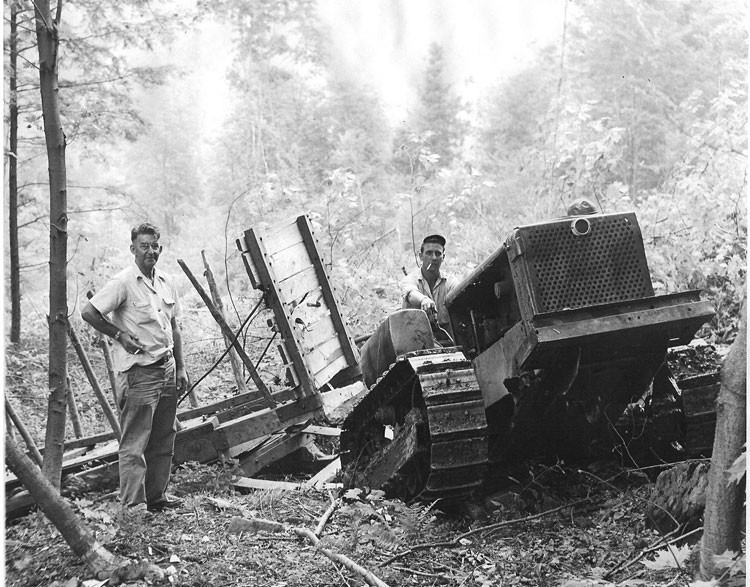
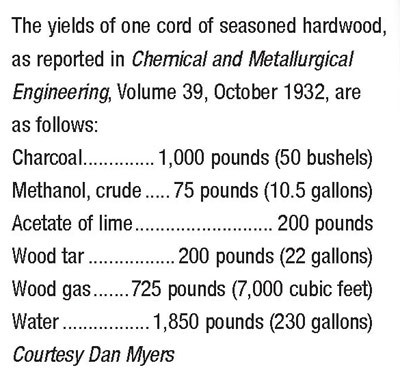
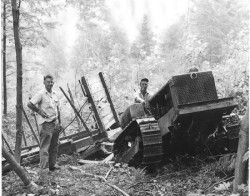
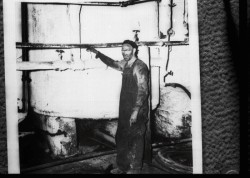

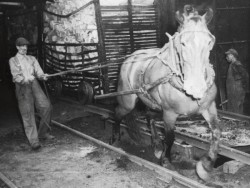
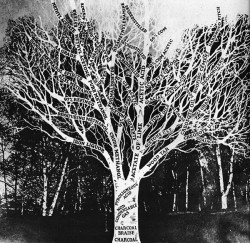

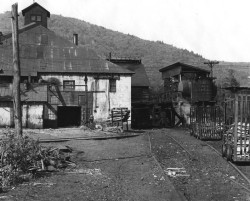
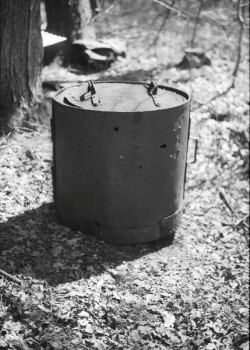
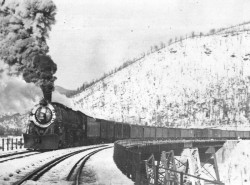
Discussion *